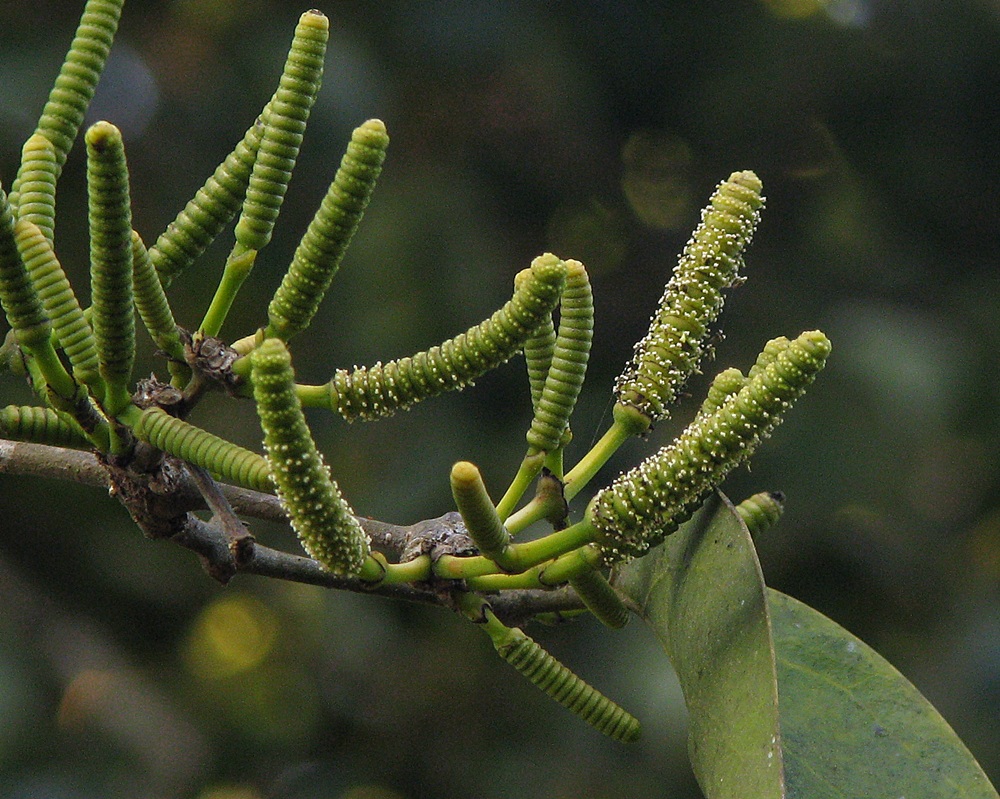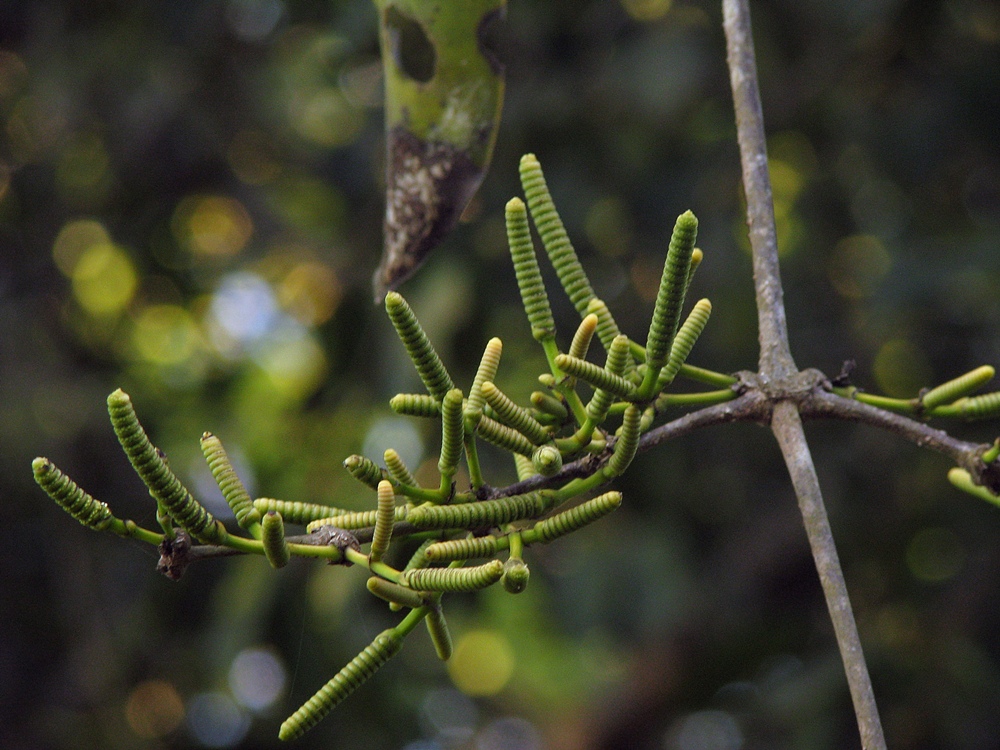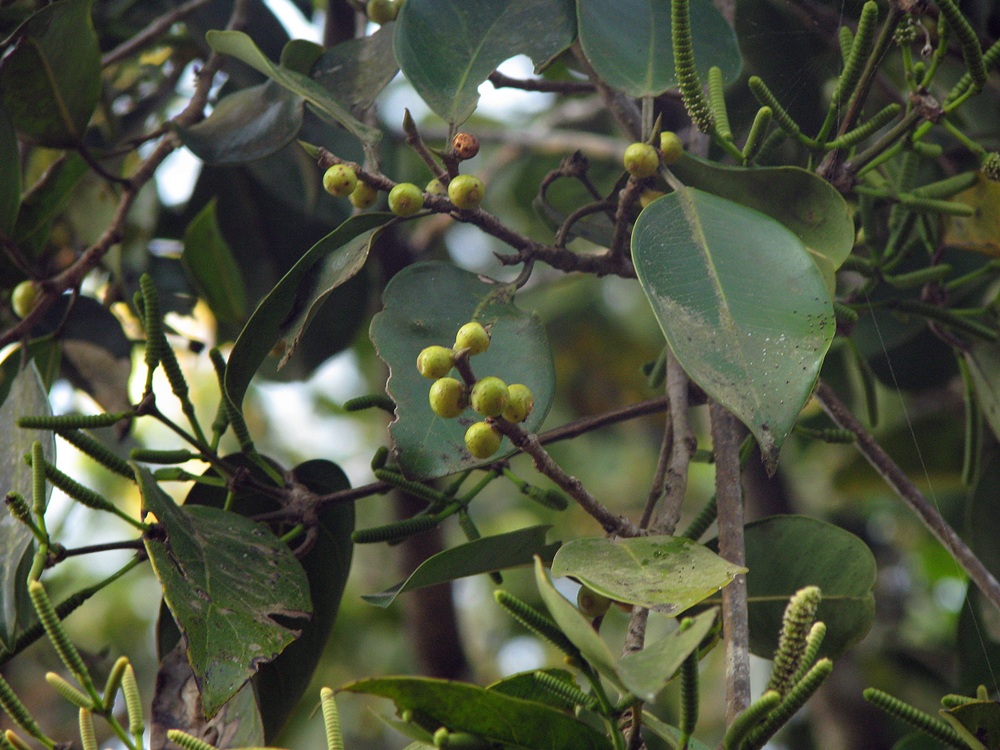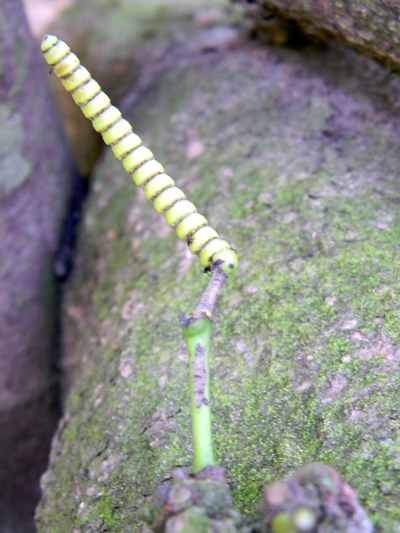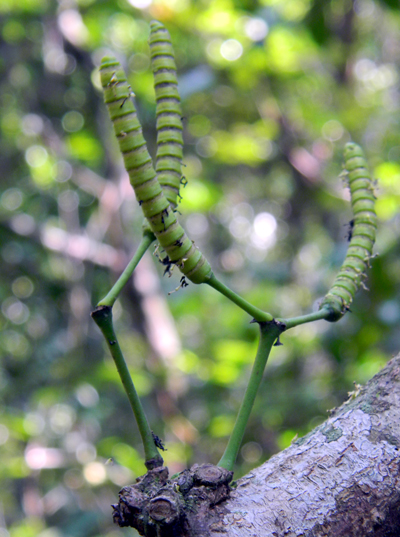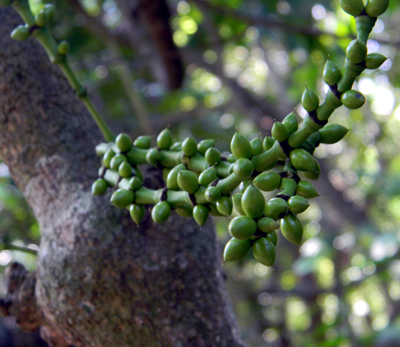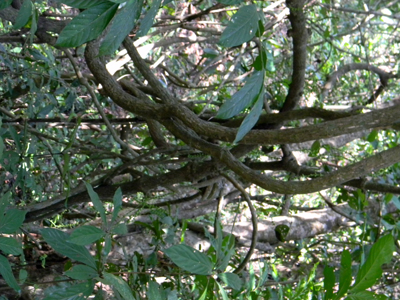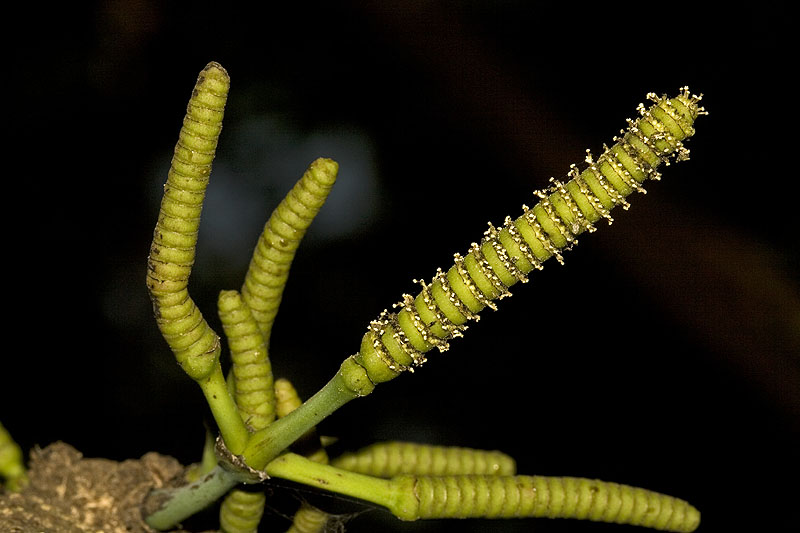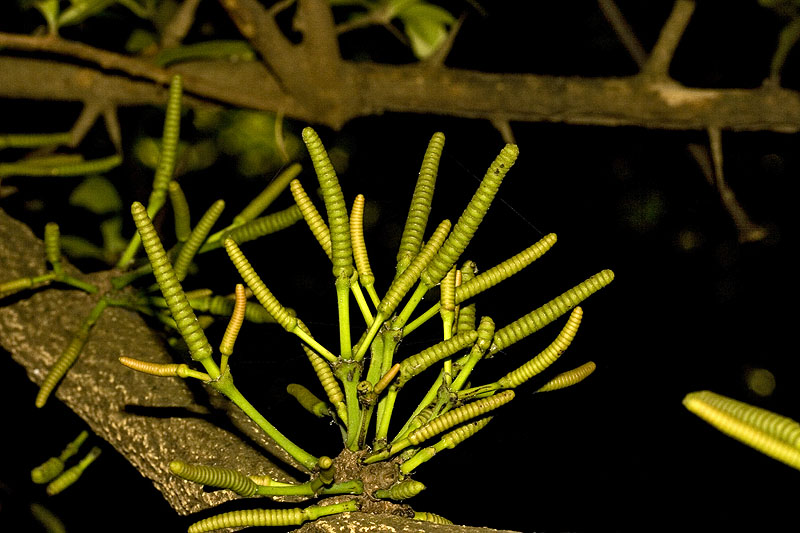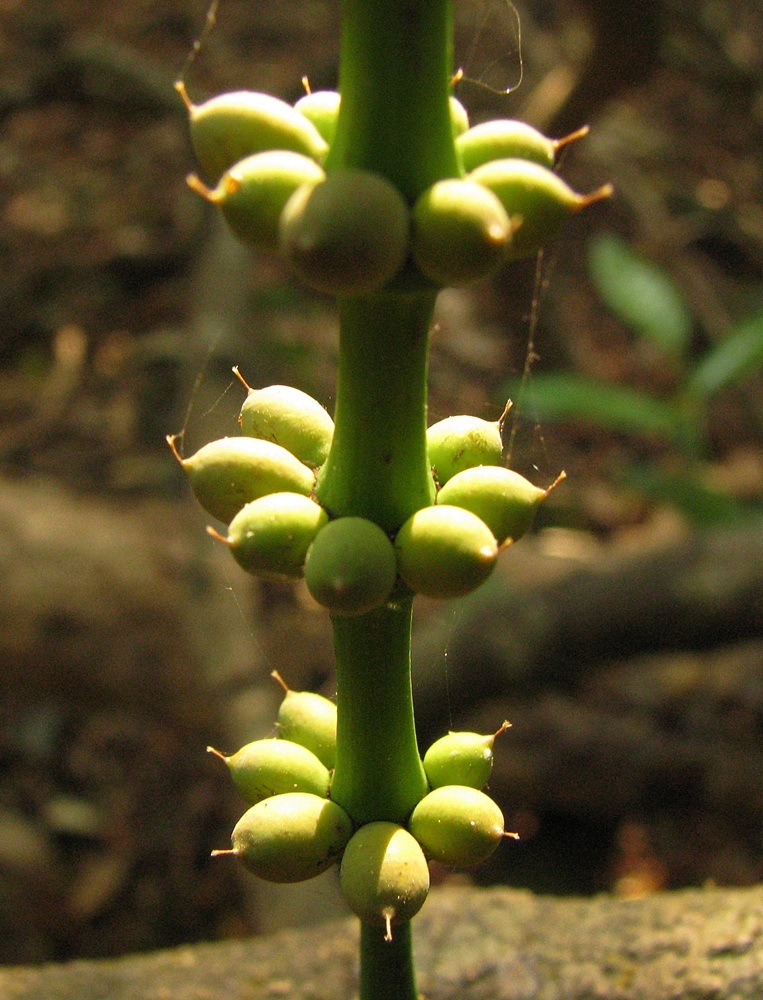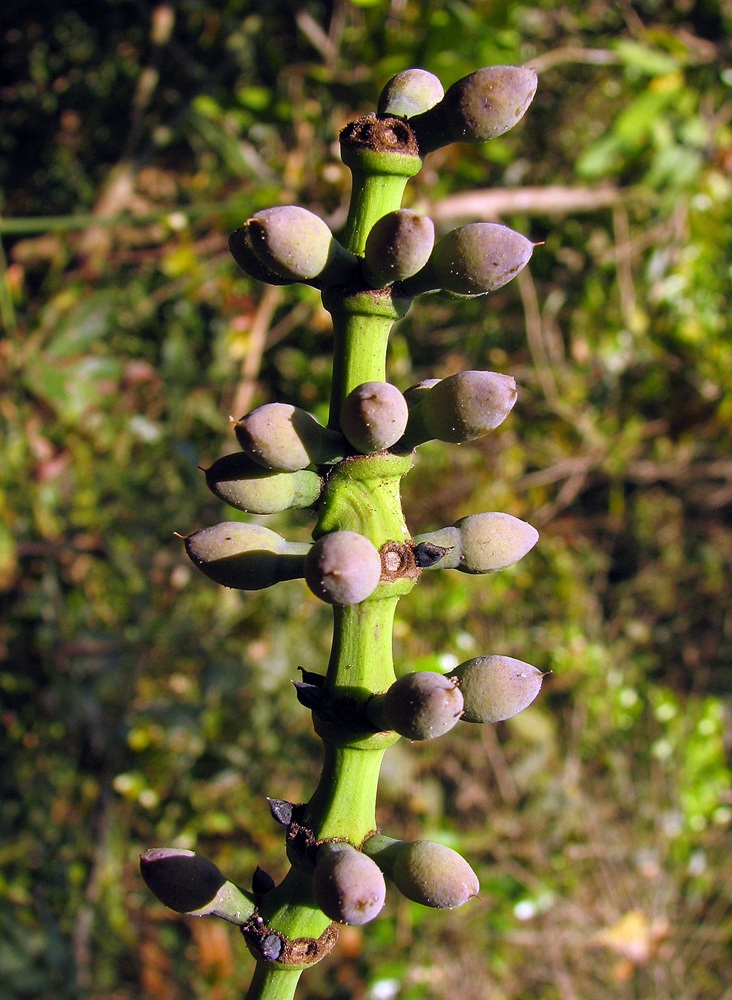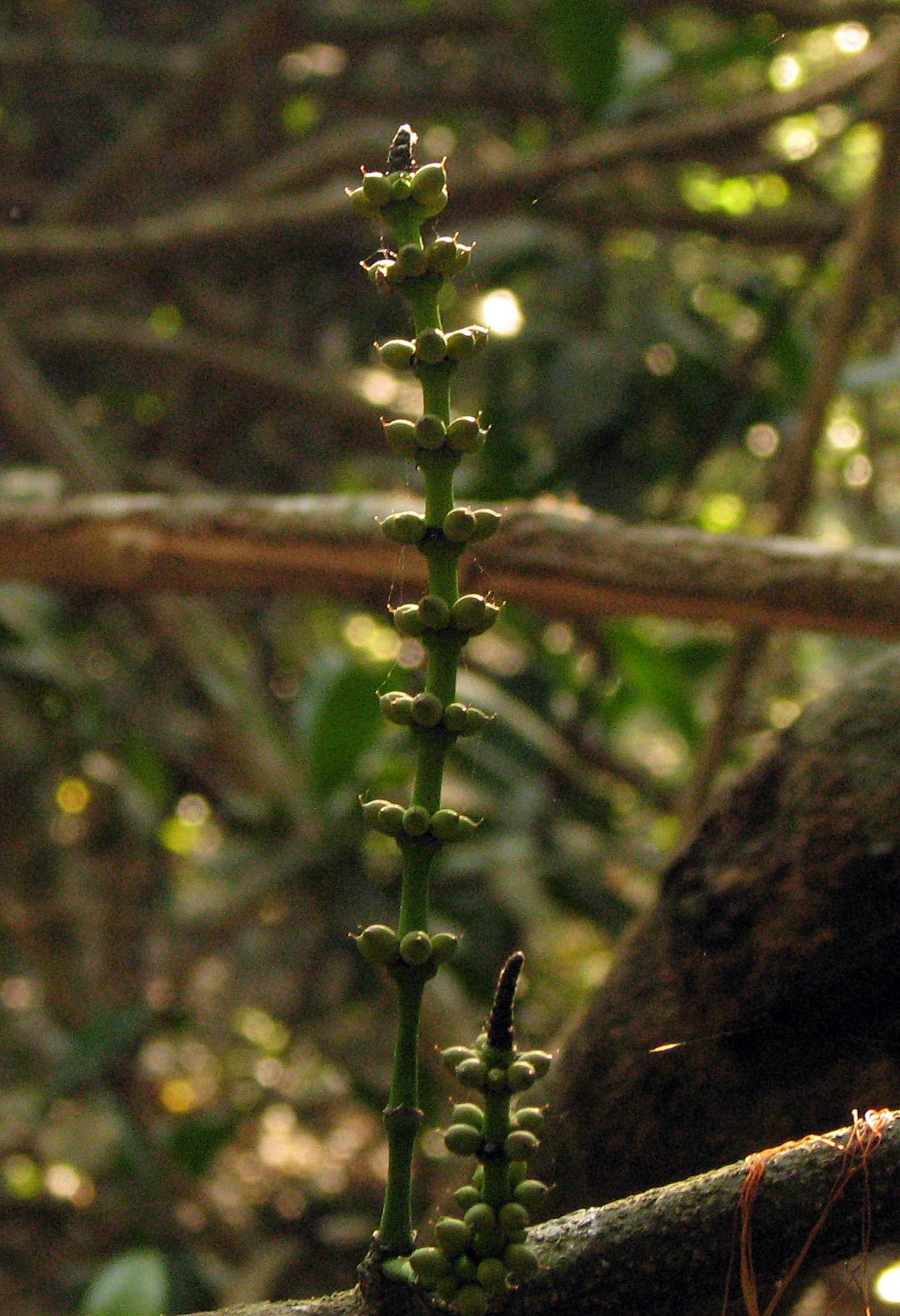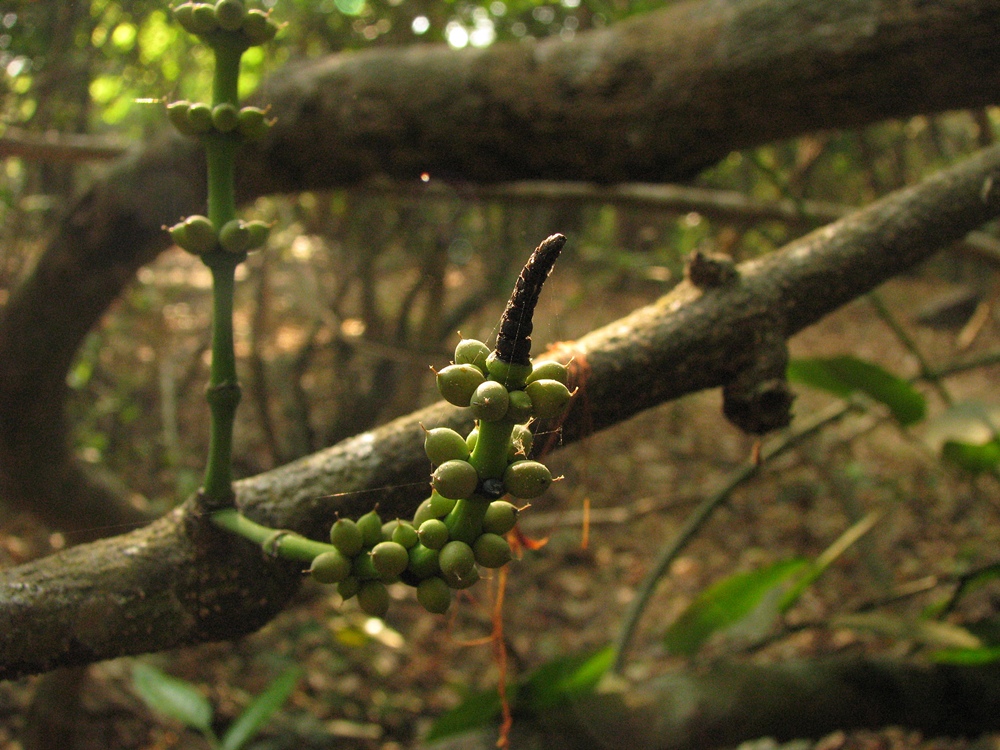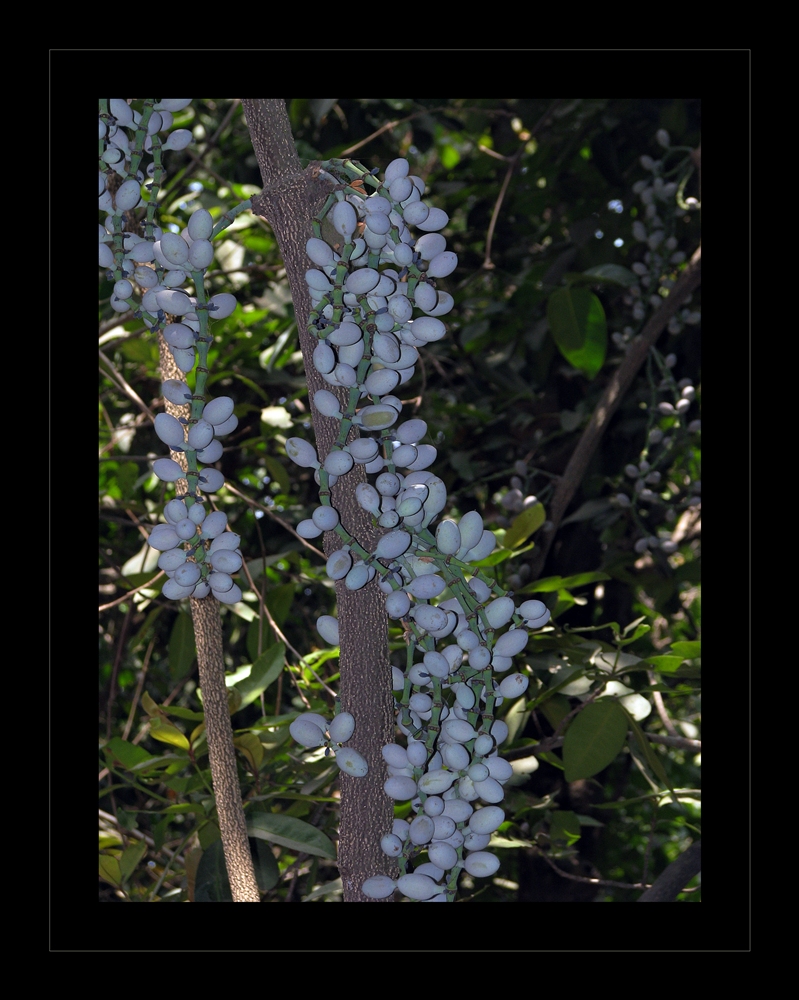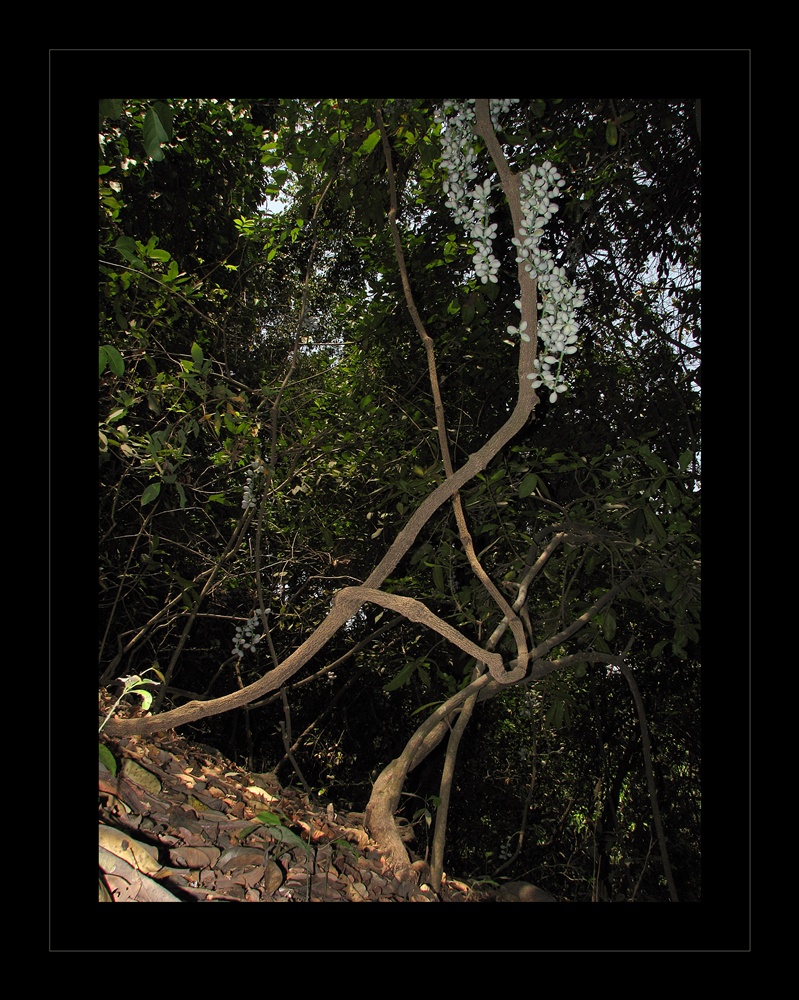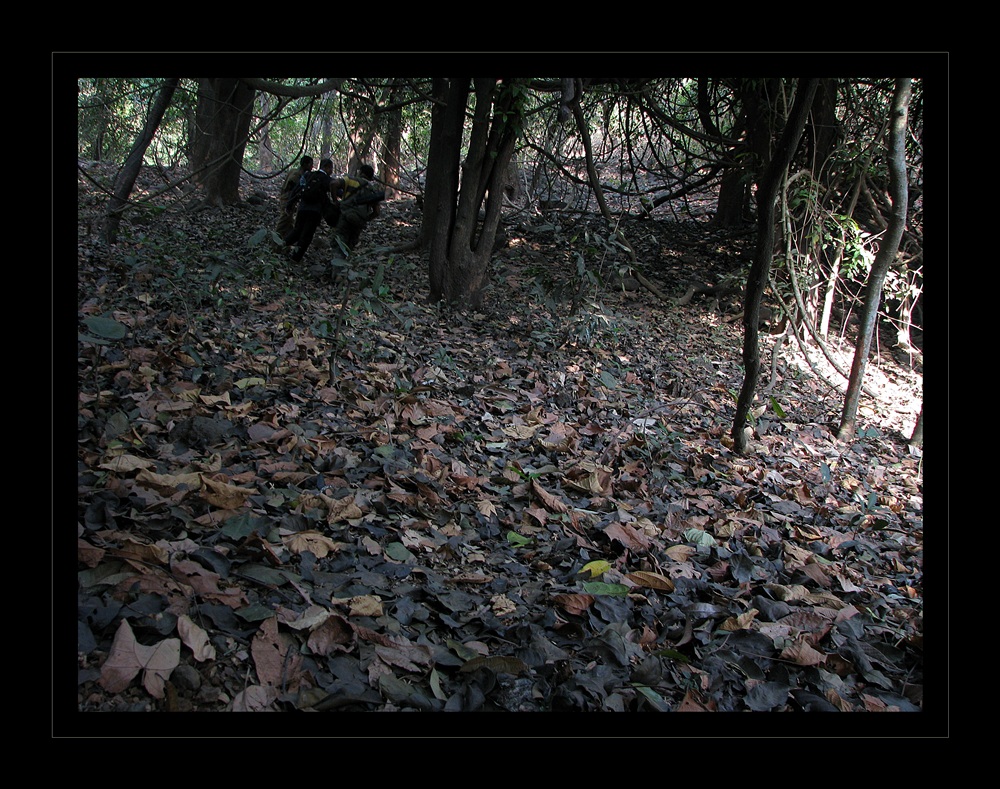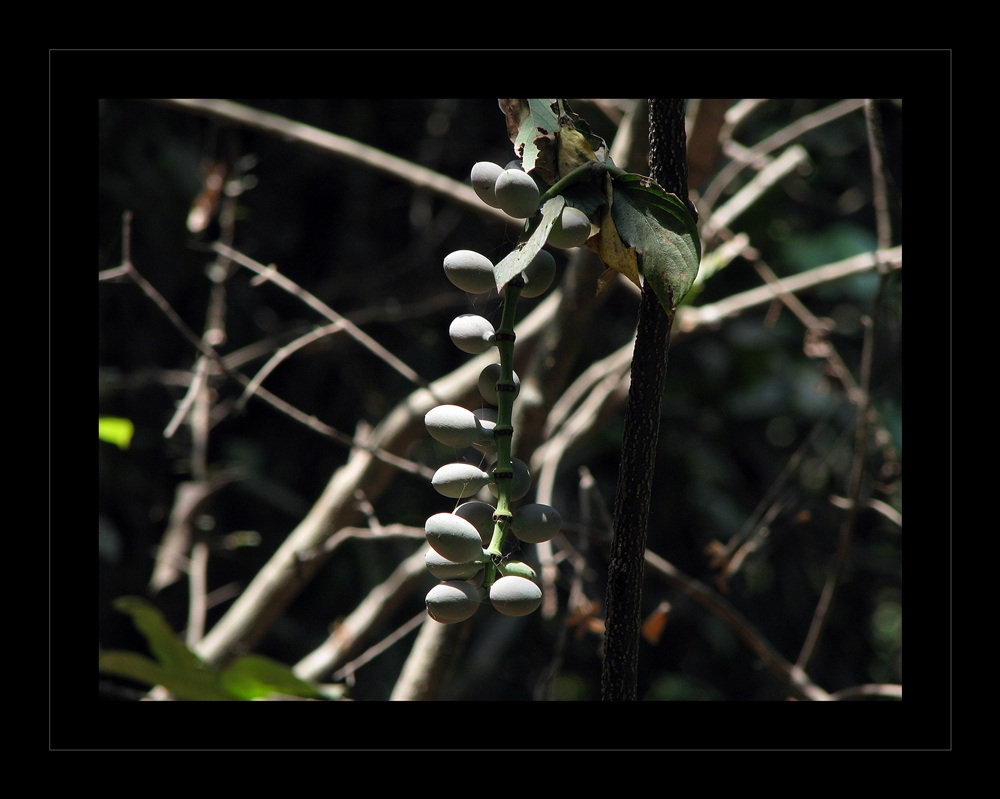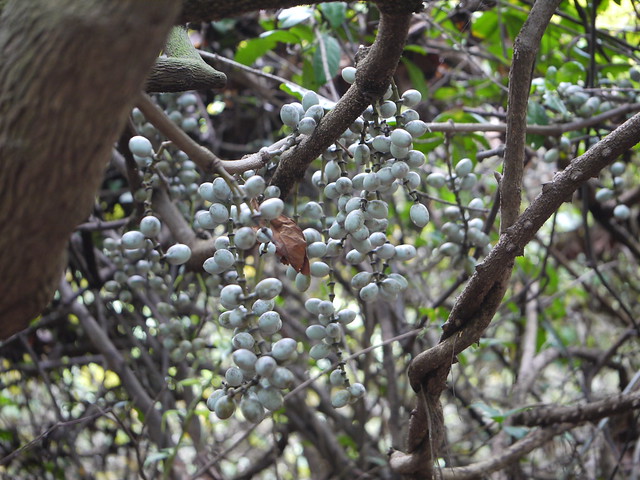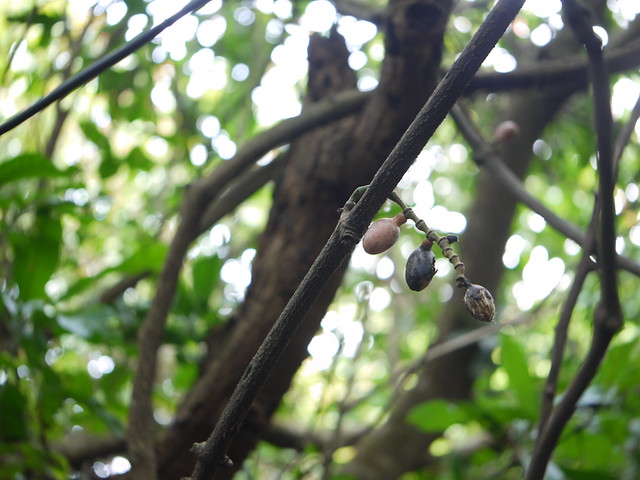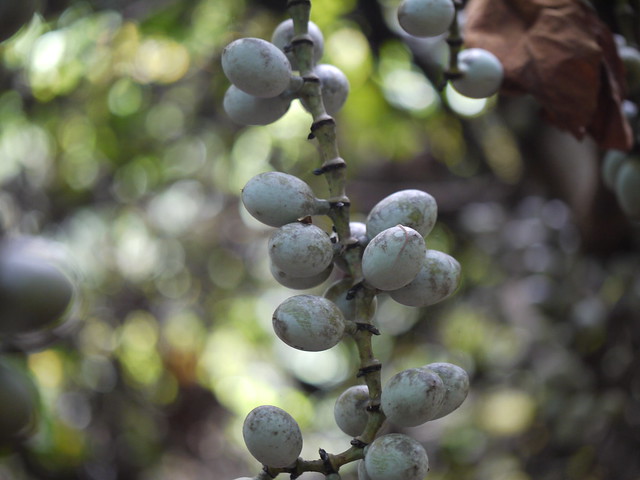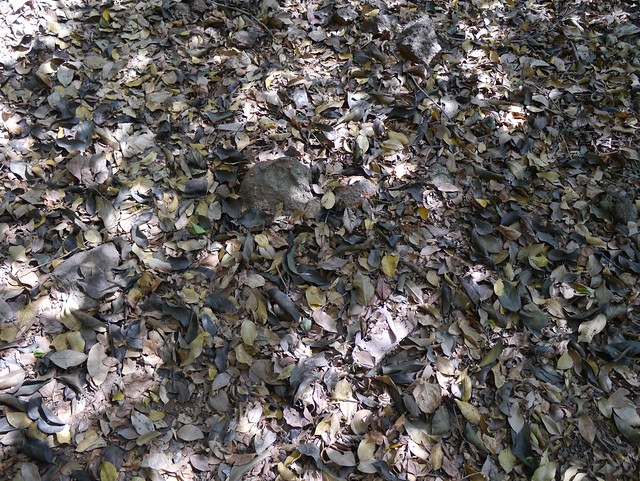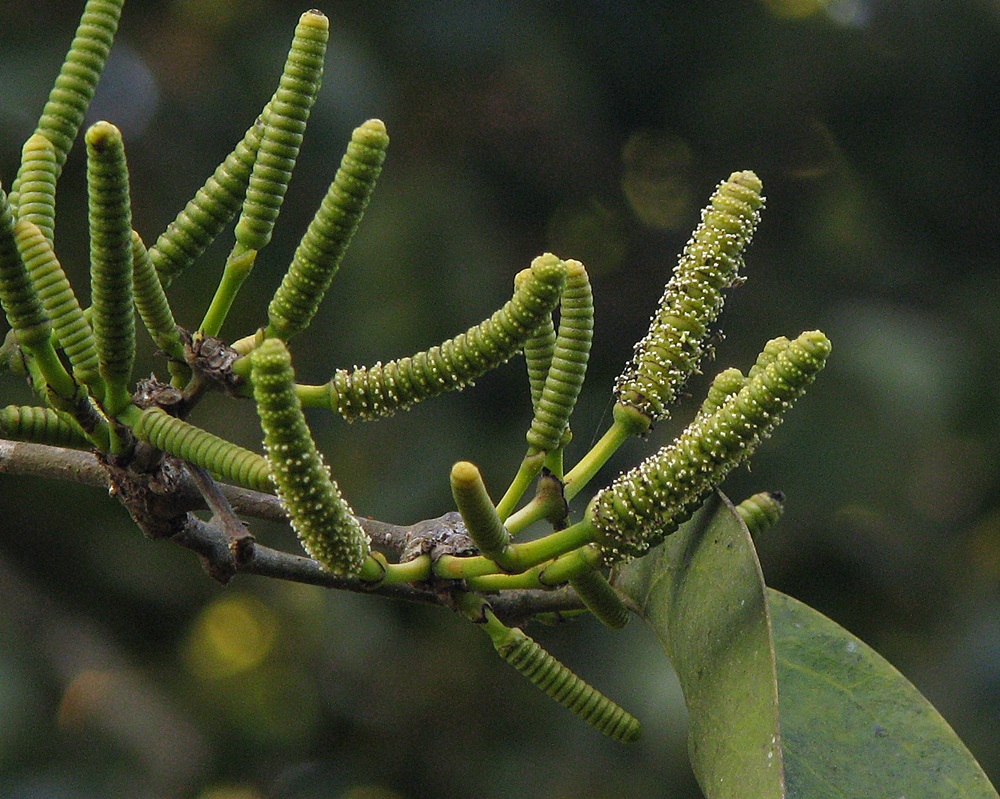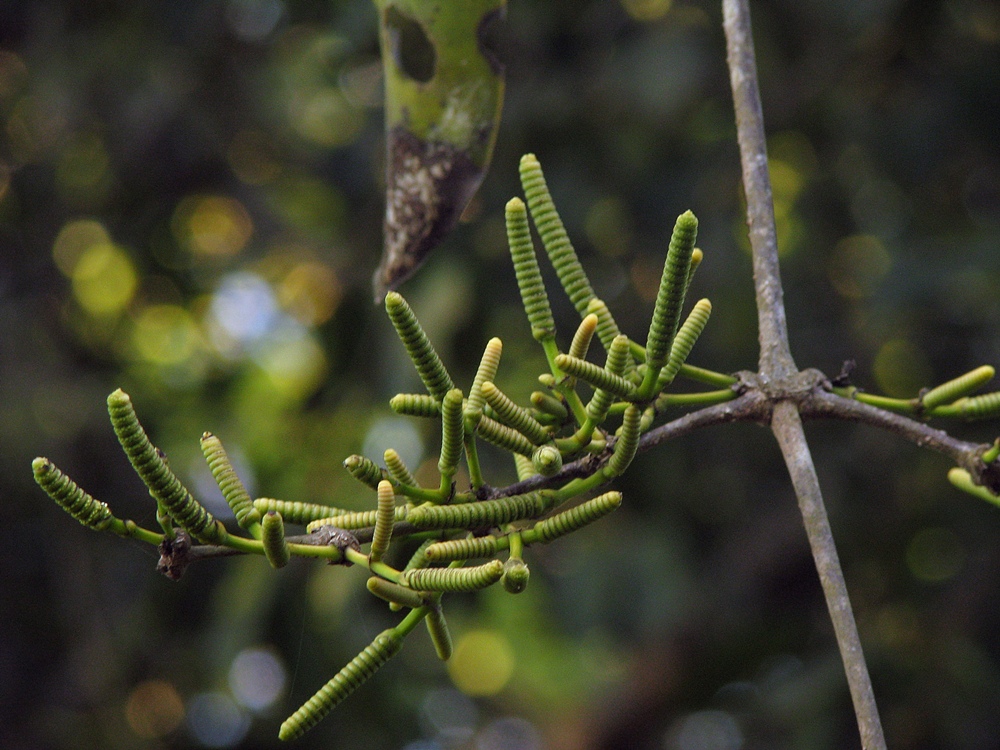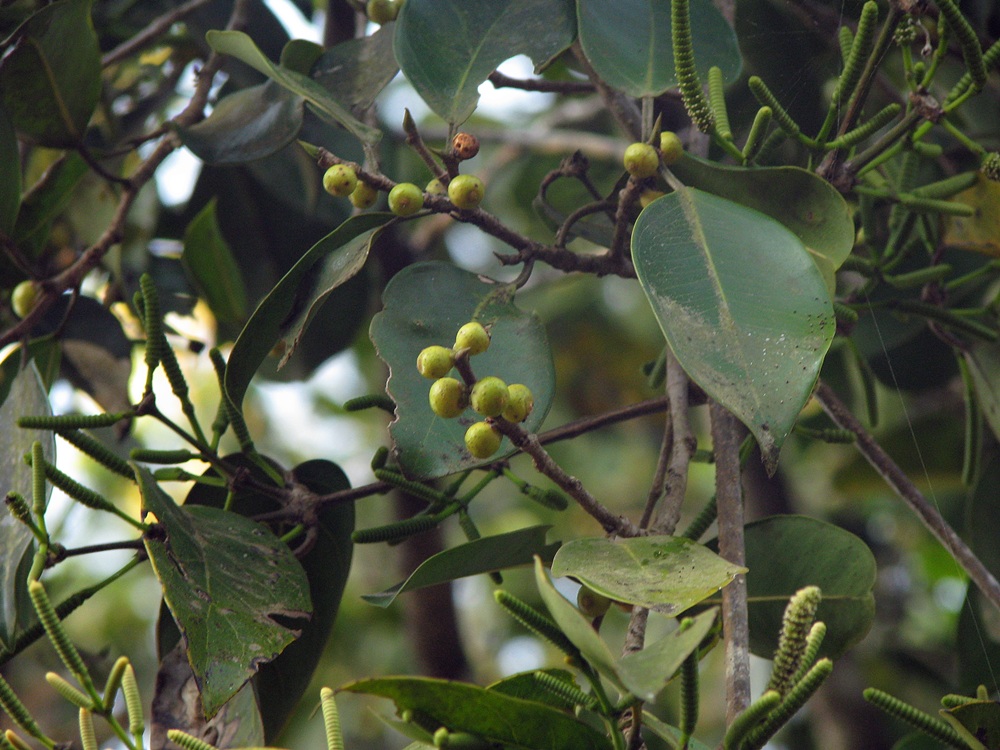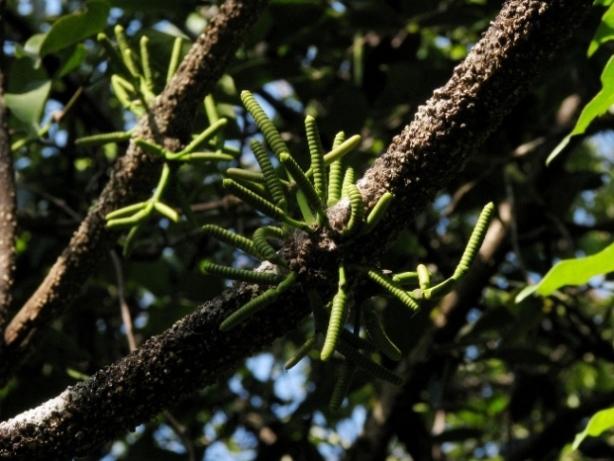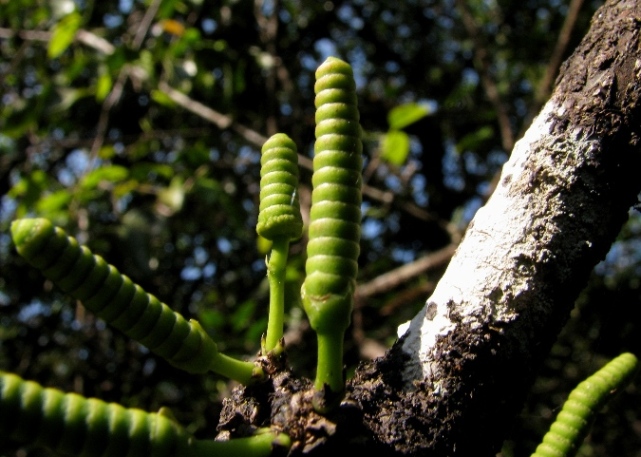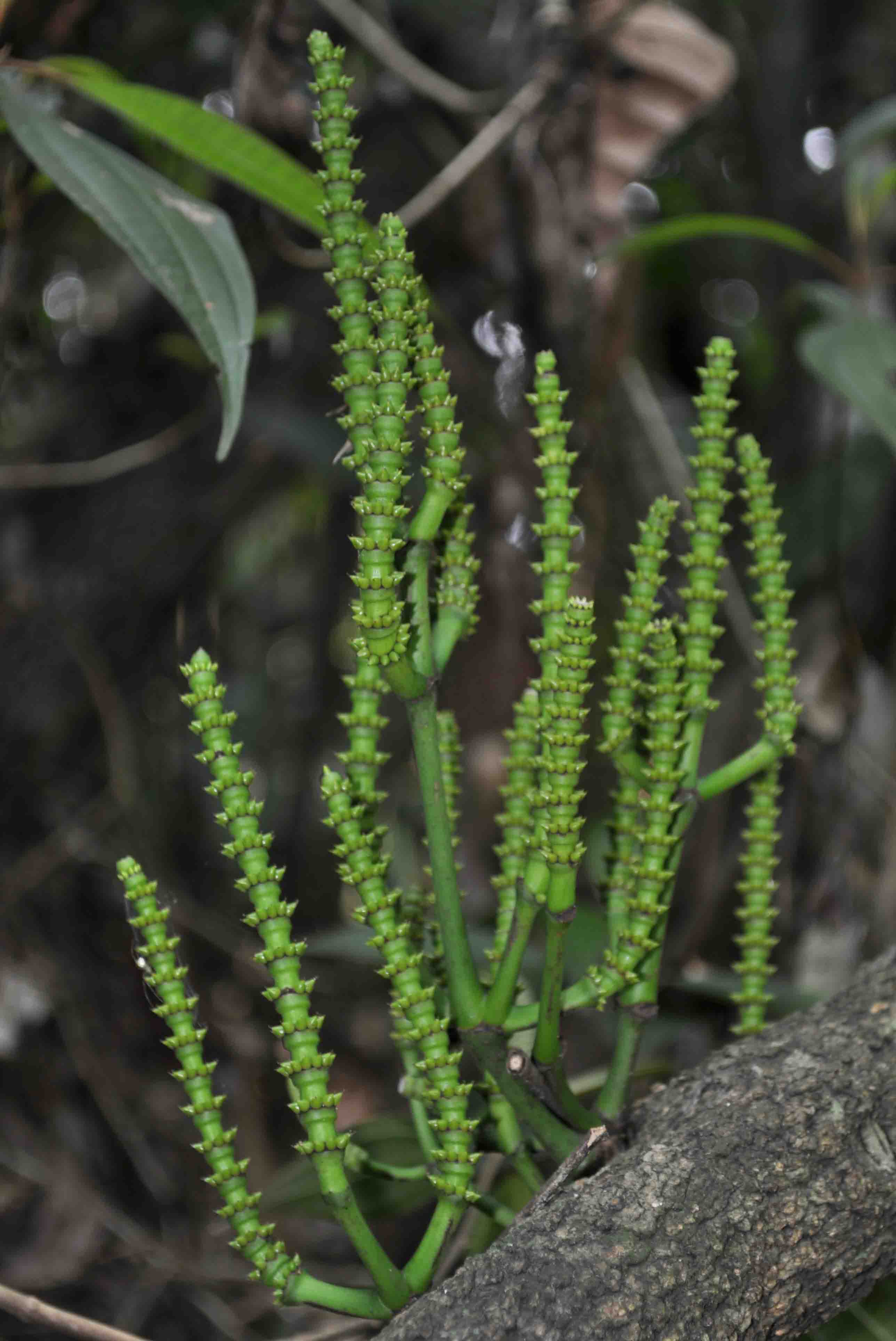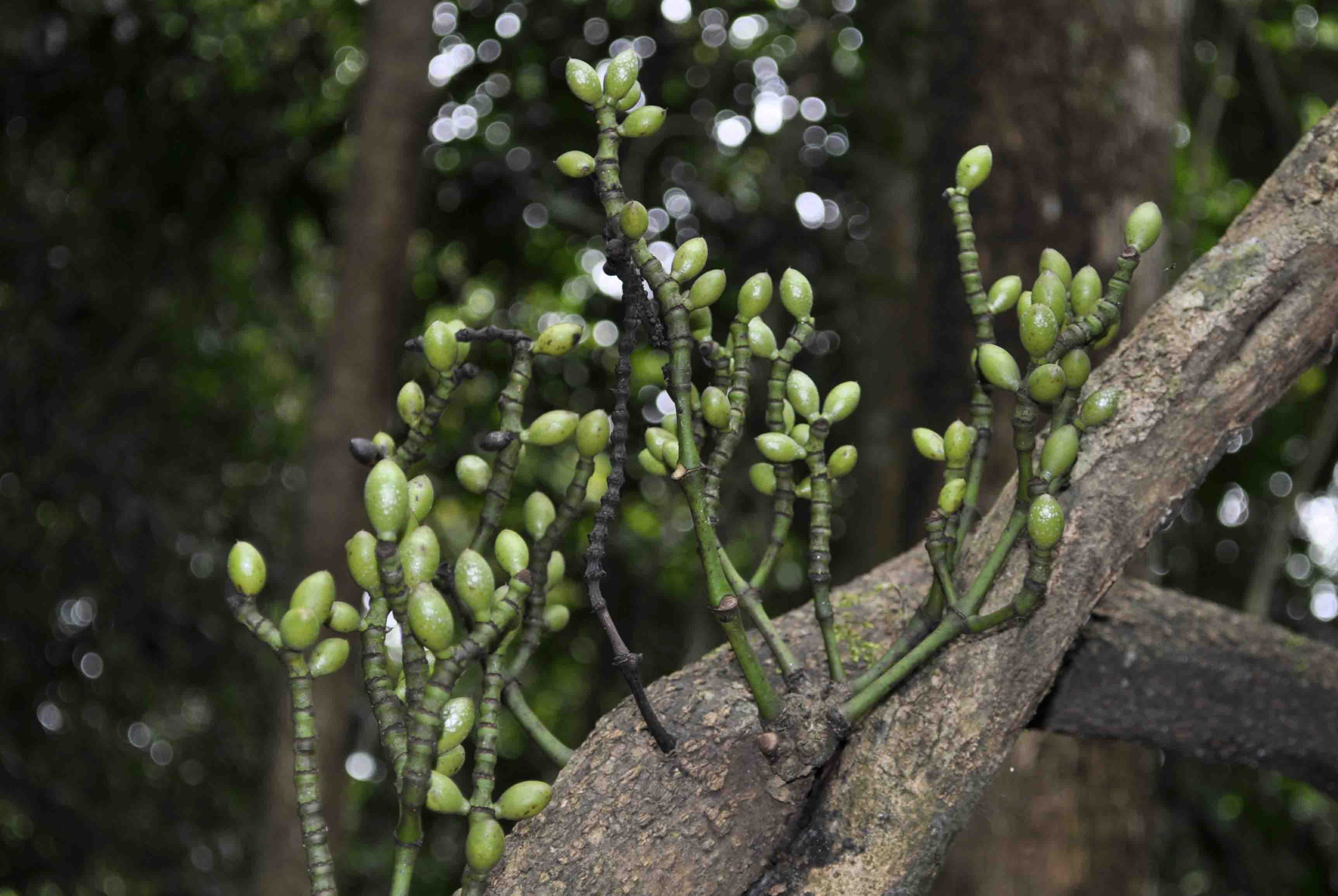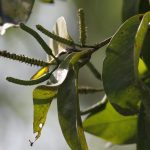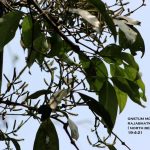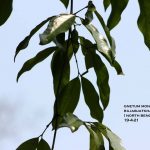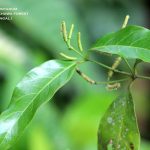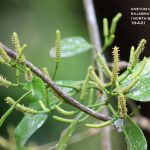|
Gnetum gnemon L. Shrubs or small trees; leaves drying yellowish; seed coat usually velvety, rarely glabrous as per Keys at Flora of China (Assam; Bismarck Archipelago; Borneo; Cambodia; Caroline Is.; China South-Central; Fiji; Lesser Sunda Is.; Malaya; Maluku; Myanmar; New Guinea; Nicobar Is.; Philippines; Queensland; Santa Cruz Is.; Solomon Is.; Sulawesi; Thailand; Tibet; Vietnam as per Catalogue of Life) Gnetum montanum Markgr. Vines; leaves drying dark green to brown or black; seed coat glabrous or with minute, silvery scales; Seeds clearly stipitate, stipe much longer than thick; Seed stipe 0.2-0.6 cm; Seed cylindric-ovoid or cylindric, 0.65-0.9(-1.2) cm wide as per Keys at Flora of China (Andaman Is.; Assam; Bangladesh; Cambodia; China South-Central; China Southeast; East Himalaya; Laos; Myanmar; Nepal; Thailand; Vietnam as per Catalogue of Life)
. Species with description & pictures in Flowers of India as on 29.5.14:
.
.
.
University Botany Ii : (Gymnosperms, Plant Anatomy, Genetics, Ecology), Volume 2 By S M Reddy, S J Chary (2003- Gnetum species in India- Distribution-
. Gymnosperm (naked seeds plant) : structure and development By V.P. Singh (2006)- P. 607- Details-
. Traditional Trees of Pacific Islands: Their Culture, Environment, and Use edited by Craig R. Elevitch (2006)- Great details-
Gnetum gnemon . Forest Plants of Eastern India By Amal Bhusan Chaudhuri (1993)- Breif details-
Gnetum scandens ROXB. (Syn. of Gnetum edule (Willd.) Blume) . . Gnetum : 3 posts by 2 authors.
I have updated eFI (efloraofindia) page on Gnetum Attempts have been made to incorporate most of the species available in India & nearby areas with details & keys directly or through links as far as possible. It’s quite possible that there may be some discrepancy in the accepted names & synonyms taken from other links. Species discussed so far in efloraofindia are given at the bottom of the page in the form of links against Subpages. On clicking them one can see all the details. If someone can provide complete list of Indian species with source references it will be wonderful. 1. G. latifolium Bl. var. funiculare (Bl.) |
Disclaimer
1. For any mistake in identification or for becoming efloraofindia e-group member (for contributing towards building of efloraofindia or otherwise), pl. mail to indiantreepix@googlegroups.com or itpmods@googlegroups.com
2. For better viewing of species’ pages, colour scheme & formatting is being followed as: Description of the species, Details of other flora species on the same page, Uses/ harms, Distribution, Abundance/ Location/ Flowering time & date, Habit & habitat, Etymology & pronunciation, Other interesting information, stories etc., Others, Botanical names, Common names, Main point of discussion below, Discussion about Botanical names.
Navigation
- Award for eFloraofIndia
- Colour scheme & formatting
- Copyrights, Permissions, Citations
- eFloraofIndia appreciated
- Names of Plants in India site
- Flowersofindia site
- Posting Guidelines
- For members’ information
- Logo, Tagline, Acronym
- Volunteers required
- ‘Pitamah’ of eFloraofIndia
- ‘अजेय’ ‘Ajey’ of eFloraofIndia
- ‘Saarthi’ ‘सारथि’ of eFloraofIndia
- ‘Jewel’ of eFloraofIndia
- ‘Grassman’ of eFloraofIndia

